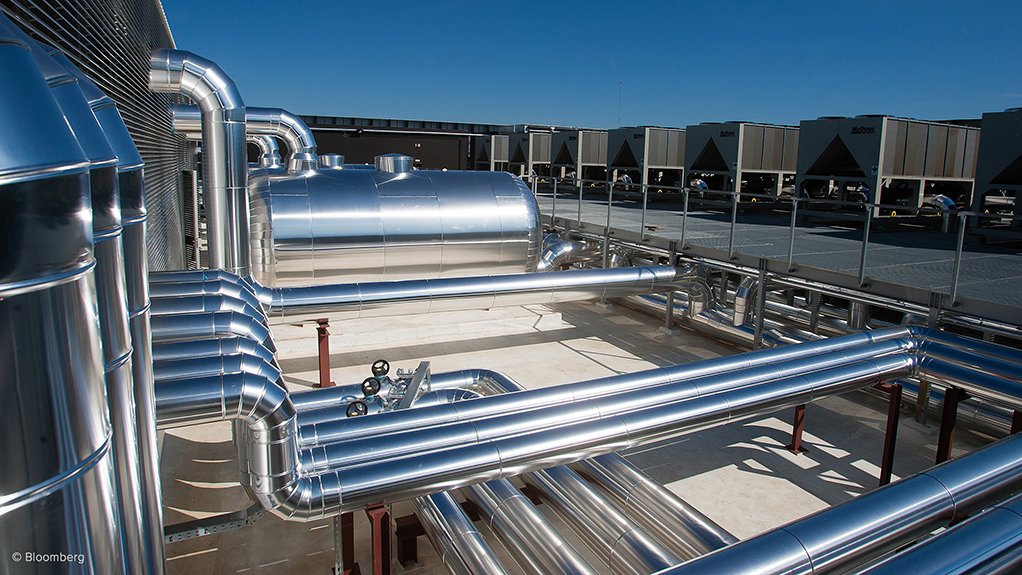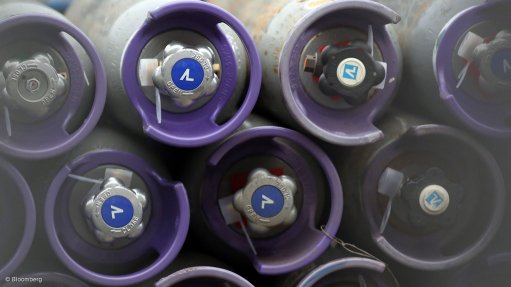End-to-end operation optimises all chilled water plant components



NEIL CAMERON Johnson Controls aims to question the practicality of most cooling systems
BIG DEAL If a chiller breaks, it can cost up to R1-million to replace and it must be clear between the operator and the supplier who should bear this cost
Photo by Bloomberg
Up to 40% of the energy consumed by a building’s cooling system can be saved by designing an end-to-end solution that monitors, controls and operates all the components of the system, says Johnson Controls building efficiency Africa GM Neil Cameron.
He points out that about 45% of a large building’s energy bill is spent on air conditioning. A large shopping centre in KwaZulu-Natal, for instance, spends about R4-million on energy every month, of which about R1.8-million is used for air conditioning.
About 65% of the R1.8-million is used by the chillers that cool water to a certain level, while the remaining 35% is used on various other components, such as the fan coil unit, the air-hand-ling unit and the pumps.
Cameron says most buildings currently have separate monitoring units for each component in their cooling system. The primary reason for having separate monitoring units is to clearly define and designate repair and maintenance responsibilities, he states.
“If a chiller breaks, it can cost up to R1-million to replace and it must be clear between the operator and the supplier who should bear this cost.”
While Cameron acknowledges that fault accountability remains a challenge, he notes that improved skills and equipment usability have made it easier to avoid damages that result in accountability disputes. “The safety of systems has become more reliable and there are highly competent building management system (BMS) providers.”
In a compartmentalised system, which does not use a building management system, the different components, such as the fan coil units and the chillers, operate independently from each other, with separate companies being responsible for their longevity.
This compartmentalisation without a BMS, however, means that a chiller, for example, may cool water to a too low temperature and, as a result, the fan coil unit will expend more energy to counteract the effects of the chiller, states Cameron.
His project is, therefore, to question the practicality of most cooling systems and to offer a way around the compartmentalisation quandary through allowing a BMS to control all aspects of the air-conditioning system.
When a central chilled water plant is controlled by one integrated BMS, all the components can be adjusted to run at an optimal output relative to the desired temperature, which conserves energy, Cameron explains.
He says, although BMSes are quite common in buildings today, they are often used only to monitor – and not actually control – the central plant equipment.
However, control software, such as Johnson Controls’ BMS, known as Metasys, allows for all the components to be monitored and operated under a unified protocol, which integrates and improves a building’s cooling system.
Metasys, which was released in 2013 with regular updates, uses algorithms to incorporate all the components of a cooling system under a single monitoring and control framework.
“The algorithms are designed to optimise the energy consumption of the cooling system and synergise the operations of all the components. In addition, the software is very user-friendly,” says Cameron.
To bolster the usability of the product, Johnson Controls offers training and off-site monitoring.
Cameron insists that the improved end-to-end approach bares no increase in building, design or operational costs.
He highlights that most brands that manufacture cooling system components – such as chillers or fan coil units – manufacture their products to simply plug and play, with no standardisation or advanced expertise required for an end-to-end design to be feasible.
Cameron adds that, because different units operate with an open protocol, a BMS determines the operations of any particular component.
Comments
Press Office
Announcements
What's On
Subscribe to improve your user experience...
Option 1 (equivalent of R125 a month):
Receive a weekly copy of Creamer Media's Engineering News & Mining Weekly magazine
(print copy for those in South Africa and e-magazine for those outside of South Africa)
Receive daily email newsletters
Access to full search results
Access archive of magazine back copies
Access to Projects in Progress
Access to ONE Research Report of your choice in PDF format
Option 2 (equivalent of R375 a month):
All benefits from Option 1
PLUS
Access to Creamer Media's Research Channel Africa for ALL Research Reports, in PDF format, on various industrial and mining sectors
including Electricity; Water; Energy Transition; Hydrogen; Roads, Rail and Ports; Coal; Gold; Platinum; Battery Metals; etc.
Already a subscriber?
Forgotten your password?
Receive weekly copy of Creamer Media's Engineering News & Mining Weekly magazine (print copy for those in South Africa and e-magazine for those outside of South Africa)
➕
Recieve daily email newsletters
➕
Access to full search results
➕
Access archive of magazine back copies
➕
Access to Projects in Progress
➕
Access to ONE Research Report of your choice in PDF format
RESEARCH CHANNEL AFRICA
R4500 (equivalent of R375 a month)
SUBSCRIBEAll benefits from Option 1
➕
Access to Creamer Media's Research Channel Africa for ALL Research Reports on various industrial and mining sectors, in PDF format, including on:
Electricity
➕
Water
➕
Energy Transition
➕
Hydrogen
➕
Roads, Rail and Ports
➕
Coal
➕
Gold
➕
Platinum
➕
Battery Metals
➕
etc.
Receive all benefits from Option 1 or Option 2 delivered to numerous people at your company
➕
Multiple User names and Passwords for simultaneous log-ins
➕
Intranet integration access to all in your organisation




















